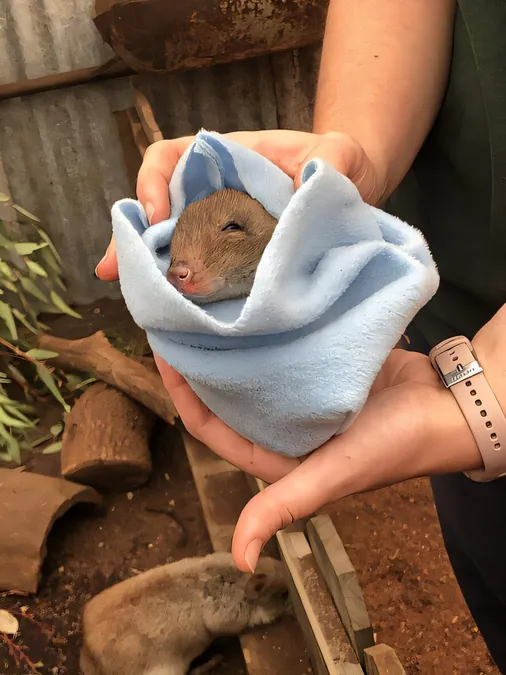
Can Predators Be the Secret to Saving Native Species?
2025-01-13
Author: Ming
Introduction
In a groundbreaking study conducted by The University of Western Australia, researchers have uncovered that maintaining some level of predation within conservation havens may significantly enhance the survival chances of native species when they are reintroduced into their natural habitats.
The Findings of the Study
Dr. Natasha Harrison, who spearheaded the research at UWA’s School of Biological Sciences in collaboration with the Department of Biodiversity, Conservation, and Attractions, emphasized the importance of this finding in her publication in the prestigious Journal of Applied Ecology. 'Invasive predators are a leading cause of global biodiversity decline, prompting the establishment of predator-free zones to protect vulnerable wildlife,' she stated.
The Dilemma of Predator-Free Zones
Despite the well-intentioned efforts to create these havens, there is a concerning downside. The safe environments can lead to native populations, like the woylies, losing vital anti-predator behaviors, which may hinder their chances of survival once they are reintroduced into areas inhabited by invasive species.
The Experimental Approach
In an innovative approach, the study reintroduced two groups of woylies into bushland in the Dryandra Woodland National Park—one group that had experienced some predation pressure from chuditch (the western quoll) while in the haven, and another group that had been completely protected from predators. Researchers then monitored the woylies for survival, reproduction, and their anti-predator traits for ten months post-release.
Results and Implications
The results revealed that the woylies that had previously faced some predation pressure exhibited stronger survival rates and adaptive responses. 'Having chuditch in their haven helped the woylies retain essential anti-predator traits, thus enhancing their ability to tackle new threats posed by invasive species after being relocated,' Dr. Harrison noted.
Caution and Further Research
However, Dr. Harrison cautioned against a blanket adoption of this strategy without deeper understanding. 'It is crucial to identify the thresholds of predation pressure that these populations can tolerate in various contexts before implementing broad strategies.'
Conclusion
The study concluded that monitoring translocated individuals from diverse backgrounds is invaluable. It not only sheds light on the impacts of havening but also reveals the dynamics of survival and natural selection among different populations.
To maximize conservation success, Dr. Harrison advocates for further replication of such research across various species and environments. 'This will help us gather insights on how to effectively manage havened wildlife to optimize conservation outcomes,' she asserted.
This compelling research opens a new chapter in conservation strategies that could pave the way for more resilient native species facing the challenges of invasive predators. Would you believe that the presence of a predator could actually safeguard the future of endangered species? The implications are both revolutionary and critical.



 Brasil (PT)
Brasil (PT)
 Canada (EN)
Canada (EN)
 Chile (ES)
Chile (ES)
 Česko (CS)
Česko (CS)
 대한민국 (KO)
대한민국 (KO)
 España (ES)
España (ES)
 France (FR)
France (FR)
 Hong Kong (EN)
Hong Kong (EN)
 Italia (IT)
Italia (IT)
 日本 (JA)
日本 (JA)
 Magyarország (HU)
Magyarország (HU)
 Norge (NO)
Norge (NO)
 Polska (PL)
Polska (PL)
 Schweiz (DE)
Schweiz (DE)
 Singapore (EN)
Singapore (EN)
 Sverige (SV)
Sverige (SV)
 Suomi (FI)
Suomi (FI)
 Türkiye (TR)
Türkiye (TR)
 الإمارات العربية المتحدة (AR)
الإمارات العربية المتحدة (AR)